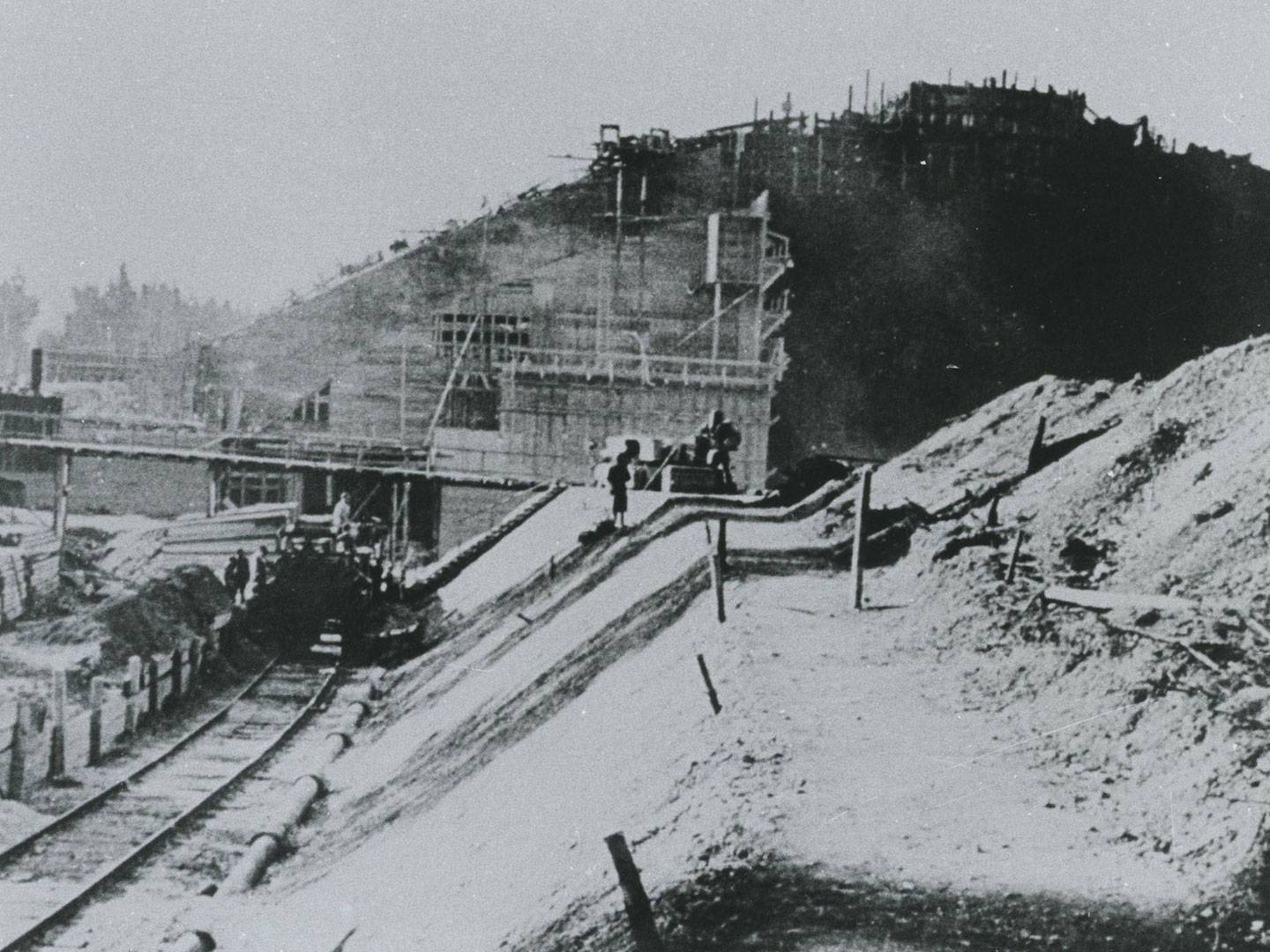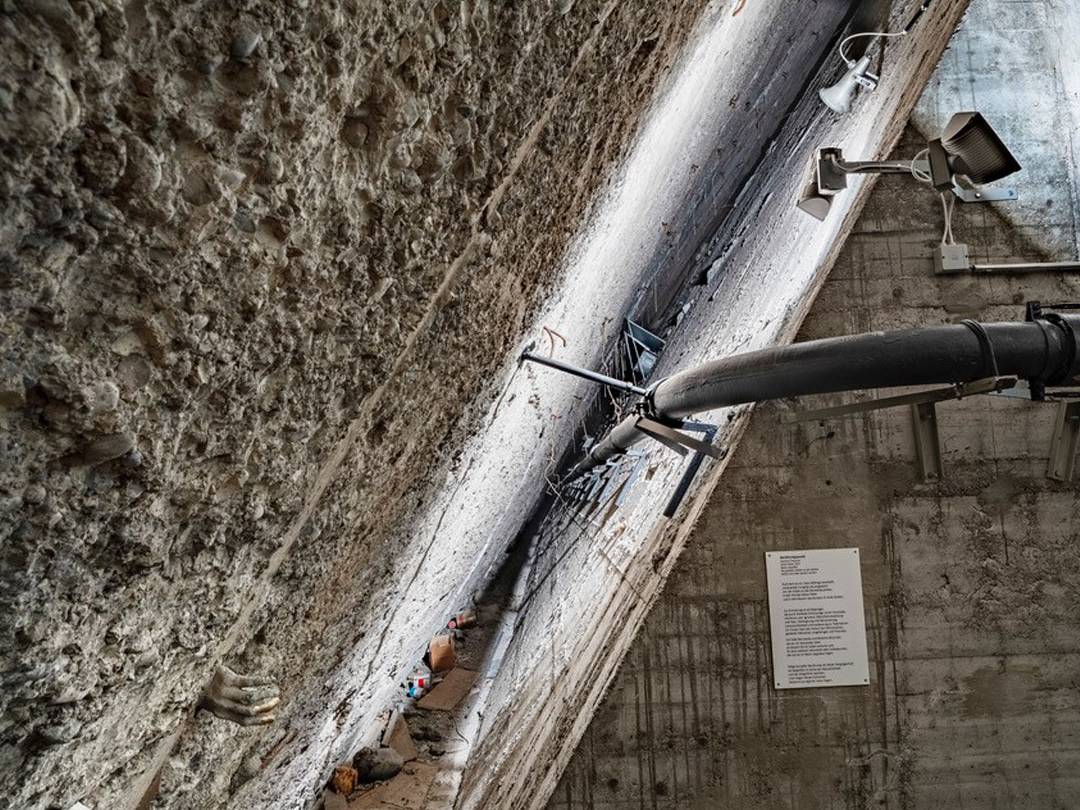Weingut II
The construction site for the “Weingut II” armament bunker was set up to the west of Landsberg in the Frauenwald. The Munich firm of Leonhard Moll from the Organisation Todt (OT) was assigned the task of constructing the bunker casing.
The work of clearing began in May 1944 on the “Weingut II” construction site. Once the abutment shafts had been dug and the formwork piled up, the concreting began. The first segment of the concrete ceiling was completed on 10 October 1944. In the next step the piled-up gravel beneath the completed segment was excavated and the construction of the five storey interior was begun. Concentration camp prisoners were compelled to do this heavy physical work. Survivors tell of fellow prisoners, who died on the construction site. Some dozen prisoners are reported to have fallen to their death in the liquid concrete.
Countless amounts of cement, lengths of track and mixers were transported to dizzying heights. The ground up there was very slippery and you had to hold tight to the bars to prevent yourself from slipping off. Some had no strength or will left to cling on. They fell down into the depths from the mountain of concrete, were lacerated by the iron beams and arrived at the bottom only as a bloody bundle.
– Zev Birger about forced labor
Although the “Weingut II” bunker had been designated in the first instance for aircraft production by the Dornier Company, it was decided in January 1945 that the Messerschmitt Company would manufacture the components for the Me 262 jet aircraft there. The plan was to manufacture about 300 aircraft per month. Although the bunker had not yet been completed, Messerschmitt began to relocate machines and production processes from its ruined factories.
When construction work ceased in April 1945, the bunker was 233 metres long, 85 metres wide and 25 metres high.
Up on the summit there were several construction sites, where the iron rebar was bent into the required length and shape. The iron bars were transported there by a train pulled by a locomotive. The locomotive made a dreadful noise; sometimes it just stopped dead. Then we had to run and push large wedges under the wheels, so that the colossus did not slide backwards
– Zev Birger about bunker construction site
After the end of the war the US troops used the bunker as a bomb blasting site. In 1959 the German Air Force took over the bunker. It was refitted and from 1963 the German Air Force used it as a materials depot and for repairing electronic aircraft components.
Since 2011 the “Weingut II Memorial Site” has provided information on the history of the site as part of the underground facilities of the Military History Collection. Information on guided tours is available on https://mgs-weingut-ii.business.site.



